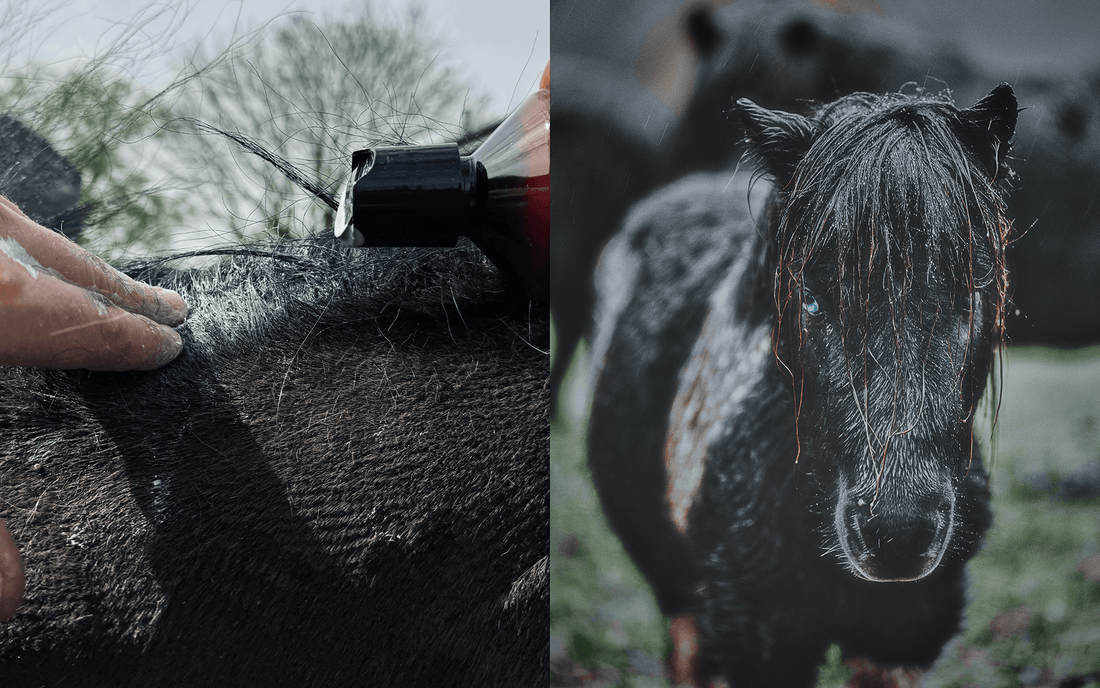Rain mange is often overlooked in horses, especially in animals that already suffer from sweet itch. Many horse owners initially suspect that the symptoms are another flare-up of eczema. The challenge: rain mange often occurs in the same parts of the body as sweet itch, which makes it difficult to distinguish. But there are two key features that help to identify rain mange:
Weather dependence : Rain mange occurs mainly in cold and wet weather, while summer eczema is mostly active in the warmer months.
Scaling : The scales in rain mange are large, hard and dark brown, often in several layers. In contrast, the scales in sweet itch are light and flaky.
Note: Scabs can also be brown, but the scales in rain mange are much harder and firmer.
Another sign is the often hardened skin around the affected areas. Rain mange is caused by bacteria and can be treated effectively, for example with our Hestakofi anti-mud spray . The carefully selected natural active ingredients work against harmful microorganisms from the very first application. Thanks to probiotic bacteria, the regeneration of the natural skin microbiome is supported, while moisturizing and cell-activating ingredients promote healing and strengthen the tissue sustainably.
If the condition does not improve within a week, consult a veterinarian as antibiotic treatment may be necessary.

